CIRCULAR ECONOMY
- Description
- Curriculum
- FAQ
- Reviews
About Course
Talking about the circular economy means “defining an economy designed to be able to regenerate itself. In a circular economy, the flows of materials are of two types: the biological ones, capable of being reintegrated into the biosphere, and the technical ones, destined to be revalued without entering the biosphere” (Ellen MacArthur Foundation). The circular economy has a lot to do with sustainable development, understood as “the process of change such that the exploitation of resources, the direction of investments, the orientation of technological development and institutional changes are made consistent with future needs as well as with the current ones “(WCED, Our Common Future, 1987). The proposed course aims at developing basic knowledge, starting from the analysis of the current situation, at addressing changes, both local and global, with the aim of orienting choices, including occupational ones, towards ever more required work activities. But also, individual and collective behaviours towards an awareness that we are guests on the planet. Energy resources, modes of production and consumption, waste, agricultural practices are just some of the issues addressed, to which are added the methods of starting up entrepreneurial activities and what skills they require. Because the pillars of the circular economy and sustainable development are three, indeed four: environment, economy, society, and training.
-
11.1 - Introduction of the coursePreview 15:11
-
21.2 - Sustainability: the three pillars (environment, society, economy)15:13
-
31.3 - How does circularity relate to sustainability?15:13
-
41.4 - How does circularity relate to sustainability?15:27
-
52.1 – What are the key elements of the economy?17:56
-
62.2 - What is a circular economy?15:09
-
72.3 – Which are the definitions and principles of a circular economy16:54
-
82.4 – How does circular economy contribute to the sustainability?17:56
-
92.5 - Useful documentationsText lesson
-
103.1 - The line (a human concept) and the circle (a natural proceeding)14:53
-
113.2 - The line (a human concept) and the circle (a natural proceeding) - Historical timeline of circularity thinking15:26
-
123.3 - Historical timeline of circularity thinking15:25
-
133.4 - When was the Concept of Circular Economy born? The international conferences (UN)15:21
-
144.1 - Every action, a reaction, in any field: finance, industry, science, society.15:27
-
154.2 - Every action, a reaction, in any field: finance, industry, science, society.14:33
-
164.3 - Samples: from global to local, from local to global15:01
-
174.4 - Global challenge (definition, figures)14:34
-
185.1 - Natural resources and material flows11:34
-
195.2 - Towards a circular economy10:11
-
205.3 - Material footprint and consumption08:53
-
215.4 - Material flow analysis11:24
-
226.1 - What is environmental economics?16:17
-
23Text lesson
-
246.3 – Decoupling economic growth process from resource intensive use14:48
-
256.4 - Current insecure employment and poor working conditions, poverty, and inequality16:04
-
267.1 - Circular Economy models new approaches on: Raw materials15:03
-
277.2 - Production15:04
-
287.3 - Consumption15:03
-
297.4 - Consumption17:24
-
307.5 - Useful documentationsText lesson
-
318.1 - Waste prevention and management sustainable models which are cored and driven by human empowerment15:06
-
328.2 - Industrial Resource efficiency15:10
-
338.3 - Eco-innovation and facilitating access to green finance (its definition)15:22
-
348.4 - Eco-innovation and facilitating access to green finance (its definition)15:13
-
359.1 - Linear Economy18:45
-
369.2 - Linear Economy17:46
-
379.3 - From linear to circular supply chains14:47
-
389.4 - From linear to circular supply chains13:55
-
3910.1 - Linear economy to circular economy - fossil, plastics, …14:50
-
4010.2 - Linear economy to circular economy - fossil, plastics, …15:47
-
4110.3 - Green energies, recycling processes, saving water, reusing goods16:06
-
4210.4 - Green energies, recycling processes, saving water, reusing goods14:43
-
4311.1 - Why current patterns of production and consumption (linear economy) cannot continue (effects of the climate and planet change)16:58
-
4411.2 - Relations between economy and environment16:11
-
4511.3 - Setting global standards in product sustainability, working conditions and environmental protection14:58
-
4611.4 - Setting global standards in product sustainability, working conditions and environmental protection16:19
-
4712.1 - Encouraging the re-use of materials02:49
-
4812.2 - Empower consumers and public buyers10:36
-
4912.3 - Make circularity work for people, regions, and cities15:08
-
5012.4 - Promoting competitive low-carbon economy (Part 1)15:02
-
5112.5 - Promoting competitive low-carbon economy (Part 2)16:21
-
52Text lesson
-
5313.1 - Sustainable Development Goals17:42
-
5413.2 - Introduction on Agenda 203016:25
-
5513.3 - Introduction to European Green Deal 205016:30
-
5613.4.1 - Organisation05:16
-
5713.4.2 - Organisation of African Unity - OAU04:34
-
5813.4.3 - Introduction to Agenda 2063 – The Africa We Want09:05
-
5914.1 - Definition of an indicator & SDG 414:59
-
6014.2 - SDG 5 with examples15:05
-
6114.3 - SDG 7 with examples14:59
-
6214.4 - SSDGs and the Circular Economy15:54
-
6315.1 - Global goals in Africa & SDG 814:58
-
6415.2 - SDG 11 with examples15:06
-
6515.3 - SDGs and circular economy15:07
-
6615.4 - SDGs and circular economy16:12
-
6715.5 – Useful documentsText lesson
-
6816.1 – Video Lesson on SDGs04:36
-
6916.2 – Video Lesson on Agenda 2063: The Africa we want 05:15
-
7016.3 – Video Lesson on Agenda 2063: The Africa we want 02:07
-
7116.4 – Video Lesson on Circular Economy and the food of future03:26
-
7217.1 - Global population growth, urbanization, and the problem of access to healthy food, clean water, and energy - World population growth16:32
-
7317.2 - Dangers of overpopulation and Access to resources15:06
-
7417.3 - Urbanization: trends, causes, and effects16:28
-
7517.4 - Economic instruments for solving environmental problems | Accounting methodologies and indicators 17:49
-
7618.1 - Climate change and its socio-economic impacts15:19
-
7718.2 - Climate change and its socio-economic impacts15:10
-
7818.3 - Climate change and its socio-economic impacts15:15
-
7918.4 - Climate change and its socio-economic impacts15:29
-
8018.5 - Useful documentsText lesson
-
8119.1.1 - Land resources management and using renewable energy resources (best practices in Africa)15:19
-
8219.1.2 - Land resources management and using renewable energy resources (best practices in Africa)15:29
-
8319.2.1 - Facilitating access to green finance by policy makers16:03
-
8419.2.2 - Facilitating access to green finance by policy makers14:54
-
8519 - Useful documentsText lesson
-
8620.1 - Introduction to the concept of empowerment13:39
-
8720.2 - Gender empowerment to the concept of empowerment (gender and organization empowerment)13:30
-
8820.3 - Example from Africa14:44
-
8920.4 - Organization empowerment14:46
-
9021.1 - Youth education16:11
-
9121.2.1 - Social integrations and rural developments (Part 1)14:11
-
9221.2.2 - Social integrations and rural developments (Part 2)16:39
-
9321.3 - Doing smart business in Africa (some best practices - start-up, small scale farmers, young people...)17:57
-
9421.4 - Conclusion1:14
-
9521.5 - Useful documentsText lesson
-
9622.1 - Work with Nature and communities / Cultural-based solutions (Best practices in Africa) - Introduction to Nature & communities15:15
-
9722.2 - Community management of natural resources : examples from Africa14:59
-
9822.3 - Re-thinking nature-based solutions: seeking transformative change through culture and rights14:16
-
9922.4 - A special contribution to climate change16:21
-
10022.5 – Useful documentsVideo lesson
-
10123.1 – Global value chain, using new technologies and digital platform15:18
-
10223.2 - Project cycle management introduction (how to start a project - principles)15:06
-
10323.3 - Project cycle management introduction (how to start a project - principles)15:34
-
10423.4 - Project cycle management introduction (how to start a project - principles)17:01
-
10523.5 - Useful documentsText lesson
-
10624.1.1 – Eco-innovation (digital platforms)15:22
-
10724.1.2 – Eco-innovation (digital platforms)15:19
-
10824.2.1 – Role and recommendations for policy makers in promoting community initiatives, funds, co-working, etc.15:16
-
10924.2.2 – Role and recommendations for policy makers in promoting community initiatives, funds, co-working, etc.17:42
-
11024.3 – Useful documentsText lesson
-
11125.1 - Green Jobs (explanation and best practices)14:52
-
11225.2 - Green Jobs (explanation and best practices)15:17
-
11325.3 - Green Jobs (explanation and best practices)15:36
-
11425.4 - Green Jobs (explanation and best practices)13:18
-
11526.1 - Parameters, indexes and metrics in Circular models18:50
-
11626.2 - Parameters, indexes and metrics in Circular models17:22
-
11726.3 - SWOT analysis: general info12:04
-
11826.4 - SWOT analysis: general info15:02
-
11927.1 - Some examples on project impact and measurements15:31
-
12027.2 - Some examples on project impact and measurements14:17
-
12127.3 - Some examples on project impact and measurements03:28
-
12227.4 - A case study: Tunisia project13:14
-
12328.1 - Tools for environmentally products13:48
-
12428.2 - Tools for environmentally products17:22
-
12528.3 - Tools for environmentally products07:40
-
12628.4 - Tools for environmentally products15:24
-
12728.5 - Introduction on tools and methodologies14:29
-
12829.1 - Case study - What is a project?15:06
-
12929.2 - Case study - What is a project?15:03
-
13029.3 - Case study - Project phases15:25
-
13129.4 - Case study - Project cycle management14:06
-
13230.1 - Introduction to biophysical resource management14:46
-
13330.2 – hinking about sustainability15:58
-
13430.3 – Recommendations – "Facts from Africa"15:43
-
13530.4 – Recommendations – “Facts from Africa”15:19
-
13630.5 - Useful documentsText lesson
-
13731.1 - Waste damages15:17
-
13831.2 - Waste integrated management (cycle)15:22
-
13931.3 – Waste integrated management (cycle)15:21
-
14031.4 - Waste prevention, reduction, reuse15:51
-
14132.1 - Green energy and renewable resources15:11
-
14232.2 - Green energy and renewable resources15:28
-
14332.3 - Resilient Ecosystems15:10
-
14432.4 - Some best practice examples 15:05
-
14532.5 – Useful documentsText lesson
-
14633.1 - Partnership (introduction, what it is ….)18:12
-
14733.2 - Partnership (introduction, what it is ….)15:19
-
14833.3 - PPP (public and private partnership) 14:40
-
14933.4 - PPP (public and private partnership)15:53
-
15034.1 - The role of technology: industry, innovation and sustainable urban-industrial development15:44
-
15134.2 - What is a partnership? When and why do you need a partnership? Stakeholder analysis?15:36
-
15234.3 - Working with city stakeholders16:49
-
15334.4 - SDG 17 Partnership for the GoalsVideo lesson
-
15435.1 – How to contact stakeholders for your business idea08:59
-
15535.2 - How to contact stakeholders for your business idea18:35
-
15635.3 - Role of policymakers11:24
-
15735.4 - Role of policymakers17:14
-
15836.1 - Introduction to circular economy for plastics14:00
-
15936.2 - Upstream circular economy practices15:02
-
16036.3 - Downstream circular economy practices14:11
-
16136.4 - Towards a CE for plastics: driving factors & final conclusions15:44
-
16237.1 - Electronic equipment / the right of repairing15:07
-
16337.2.1 - Electronic equipment / the right of repairing03:15
-
16437.2.2 - Electronic equipment / the right of repairing11:59
-
16537.3.1 - Food and packaging10:45
-
16637.3.2 - Food and packaging07:17
-
16737.4 - Disposable products Single use products16:34
-
16838.1 - Organic waste – fertilizer15:21
-
16938.2 - Textiles – second-hand market15:10
-
17038.3 - Textiles – second-hand market15:25
-
17138.4 - Educational activities15:18
-
17238.5 - Conclucion00:09
-
17339.1 - The role of consumers in pollution12:13
-
17439.2 - Influences on consumer behaviors16:09
-
17539.3 - Environmental education11:17
-
17639.4 - Best practices09:10
-
17740.1 - The role of environmental associations16:27
-
17840.2 - The role of environmental associations15:02
-
17940.3 - Local best practices13:10
-
18040.4 - Local best practices15:23
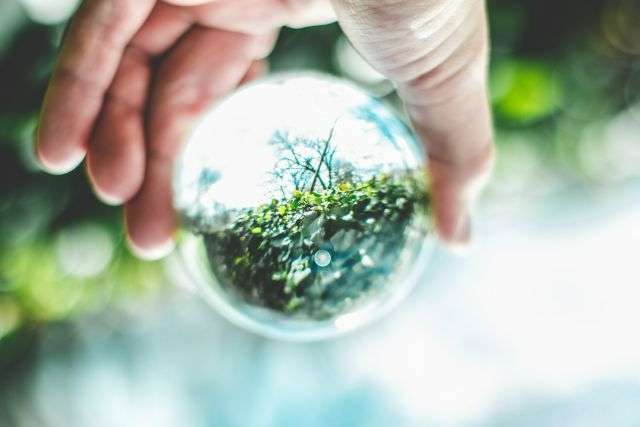
| M | T | W | T | F | S | S |
|---|---|---|---|---|---|---|
| 1 | 2 | 3 | 4 | |||
| 5 | 6 | 7 | 8 | 9 | 10 | 11 |
| 12 | 13 | 14 | 15 | 16 | 17 | 18 |
| 19 | 20 | 21 | 22 | 23 | 24 | 25 |
| 26 | 27 | 28 | 29 | 30 | 31 | |
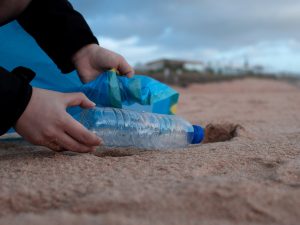
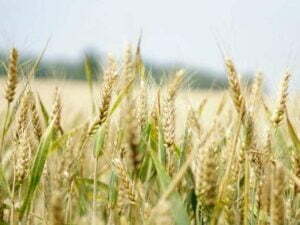
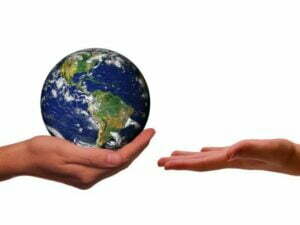
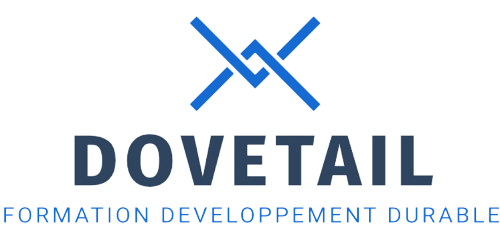
Recent Comments